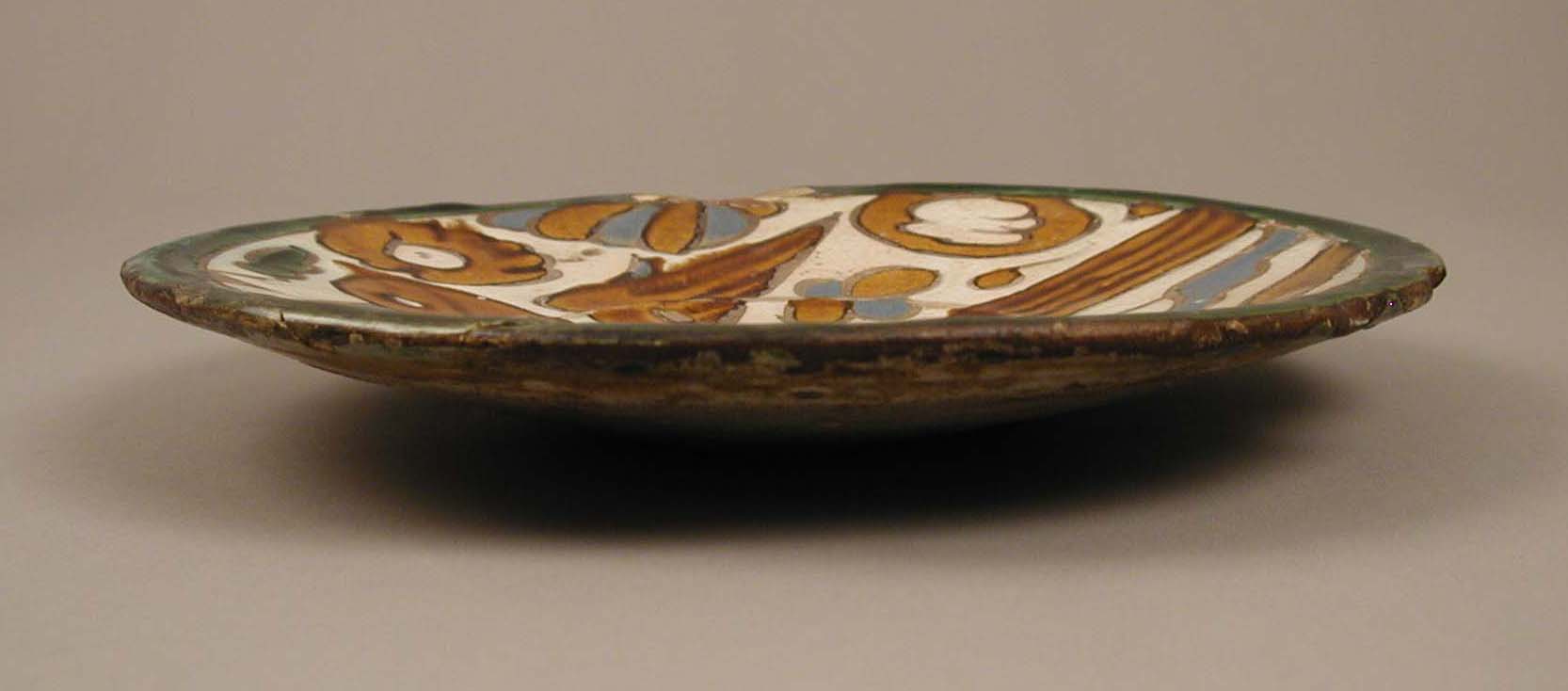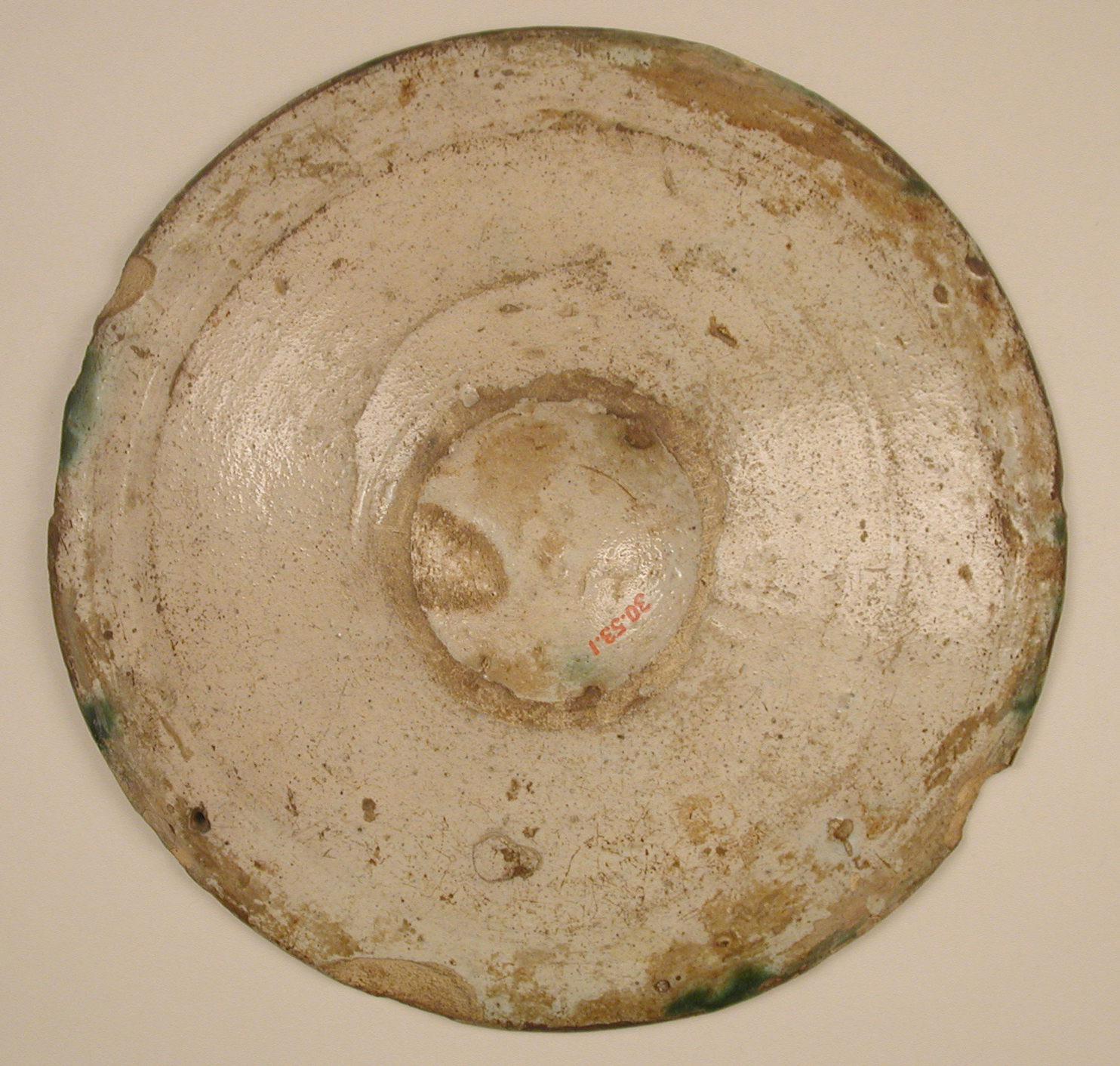Plate with Water Bird
Ceramic artists working in Seville in the late 1400s and early 1500s revived the laborious process of cuerda seca, which had been common in Spain centuries earlier. In this technique, outlines of a design are painted onto the clay using a mixture of manganese and oil. The painted lines dry into a resist barrier that keeps differently colored glazes apart. Objects made via cuerda seca were often expensive export items shipped to Africa, northern Europe, and the Americas.
Due to rights restrictions, this image cannot be enlarged, viewed at full screen, or downloaded.
This artwork is meant to be viewed from right to left. Scroll left to view more.




